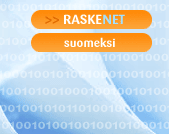
|
|
 |
 |
Järvenpää, M., Virtanen, M., & Salminen, A. (2006).
Semantic portal for legislative information.
To appear in Proceedings of the Fifth International EGOV Conference, Krakow, Poland, September 4-8, 2006.
Wien, New York: Springer Verlag.
Salminen, A., Nurmeksela, R., Lehtinen, A., Lyytikäinen, V., & Mustajärvi, O. (2006).
Content production strategies for e-Government.
To appear in A.-V. Anttiroiko & M. Malkia (Eds.),
Encyclopedia of Digital Government.
Hersley, PA: IDEA Group Publishing.
Lehtinen, A. & Salminen, A. (2006).
Computer aided support for content management development. In Y. Kiyoki, H. Kangassalo, & M. Dui (Eds.),
Proceedings of the 16th European-Japanese Conference on Information
Modelling and Knowledge Bases, EJC 2006 (pp.275-279). Ostrava: VB -
Technical University of Ostrava.
Salminen, A. & Virtanen, M. (2005). Semantic web support for business processes.
In C.-S. Chen, J. Flippe, I. Secura & J. Cordeiro (Eds.), Proceedings of the 7th International Conference
on Enterprise Information Systems, ICEIS 2005 (pp. 468-473).
Miami, FL: INSTICC Press.
pdf
Salminen, A. (2005). Building digital government by XML.
In R.H. Sprague, Jr. (Ed.), Proceedings of the Thirty-Eighth
Hawaii International Conference on System Sciences. Los Alamitos, CA: IEEE Computer Society.
pdf
Salminen, A., Lyytikäinen, V., Tiitinen, P., & Mustajärvi, O. (2004).
Implementing digital government in the Finnish Parliament.
In W. Huang, K. Siau, & K.K. Wei (Eds.),
Digital Government: Strategies and Implementation
(pp. 242-259).
Hersley, PA: IDEA Group Publishing.
Salminen, A. (2003). Towards digital government by XML standardization:
Methods and experiences. In Proceedings of the XML Finland 2003 (pp. 5-15).
pdf
 All Publications
All Publications
|
 |
|
 |
|
|
 |
 |
 |
|

What is RASKE2?

RASKE2 was a three-year research project where the goal was to develop methods for the integration of information resources
by means of metadata standardization.
A special focus in the project was in the needs of the Finnish legislative work and adoption of semantic web technologies.
The project analyzed the current information management in the legislative environment from the content management point of view and
proposed new metadata solutions.
The project started in May 2003 and was funded by the Parliament of Finland, Ministry of Finance, and Ministry of Justice.
The project continued the work done in the earlier collaborative projects RASKE and EULEGIS
where the research was tied to the standardization of the Finnish Parliamentary documents
and to the development of new means for the integration of the European legal databases, respectively.

RASKE
RASKE project (1994-1998) developed a methodology for the development
of document management,
in particular, for SGML/XML standardization.
The methods were developed and tested in the standardization of the Finnish Parliamentary documents.
 Read
more
Read
more
EULEGIS
EULEGIS (1998-2000) was an EU funded project where a consortium developed
new means for the retrieval of legal information in Europe.
The main purpose was to offer a consistent user interface to retrieve legal information
created in different legal systems and at different levels - the European Union, a member state, a region, or a municipality.
In the EULEGIS interface, information about the creation context of legal documents is given to users by graphical data models.
These models offer information about the context through four viewpoints:
legal system relationships, actor, legal information source, and process.
These views not only show the metadata to users but also aid users in choosing
appropriate EULEGIS search forms for retrieving documents from distributed databases.
 Read
more
Read
more
|





